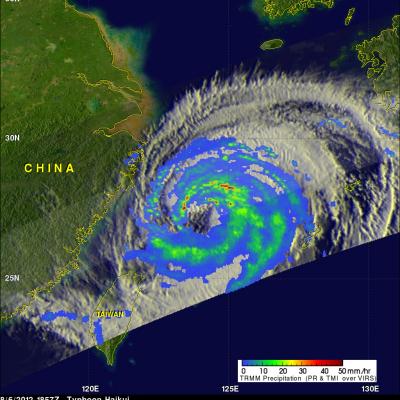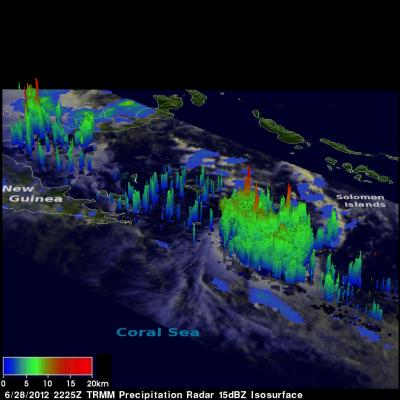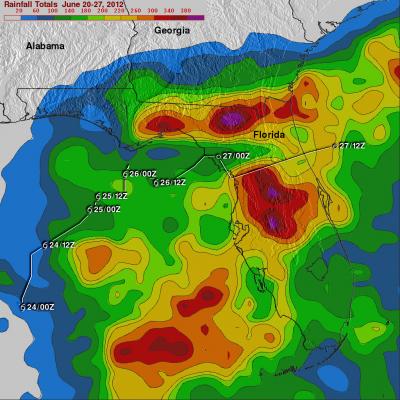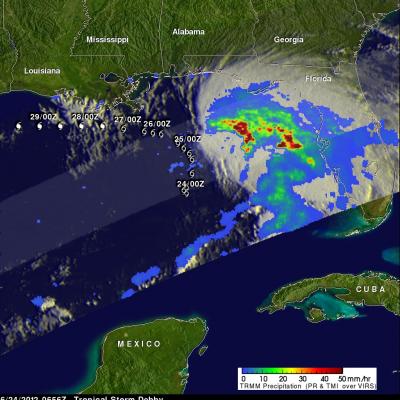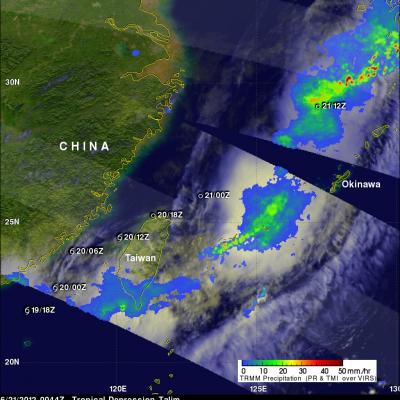Tropical Storm Ernesto Approaches The Yucatan
The TRMM satellite passed over tropical storm Ernesto on 7 august 2012 at 0711 UTC ( 3:11 AM EDT) as it was heading toward the Yucatan Peninsula. TRMM's Microwave Imager (TMI) and Precipitation Radar (PR) instruments show that Ernesto was a little better organized with bands of moderate to occasionally heavy rainfall spiraling into the center of the storm's circulation. A few powerful convective storms are shown located in these widely separated rain bands. The National Hurricane Center (NHC) predicts that Ernesto will be a category one hurricane on the Saffir-Simpson scale with winds of about



